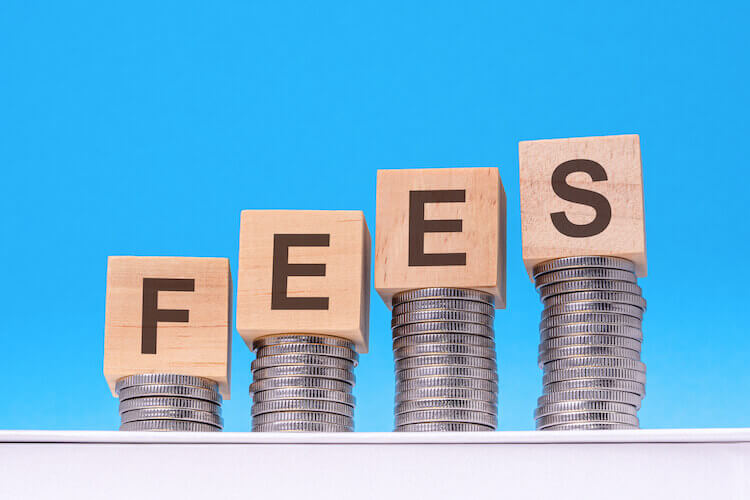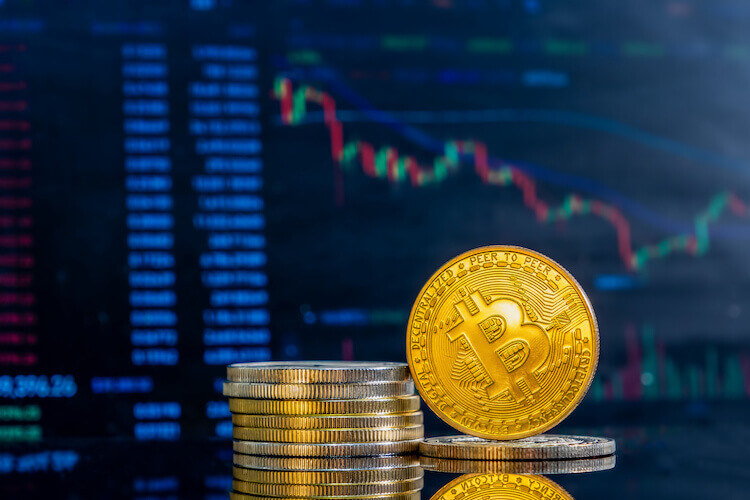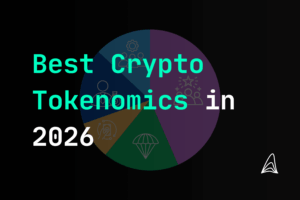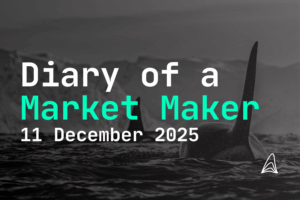
Maker VS Taker Fees - What Are The Key Differences
Table of Contents
At Orcabay, we excel at offering top-tier market making services, liquidity solutions and customized liquidity solutions. Leveraging our extensive experience and crypto market making strategy we ensure liquidity and efficient trading in the cryptocurrency space.

Jakob Brezigar
Jakob, an experienced specialist in the field of cryptocurrency market making, boasts an extensive international presence. With Orcabay, he has skillfully managed major operations and deals for a wide array of global stakeholders.
What's the difference between maker and taker fees?
Maker fees are charged for adding liquidity to the order book, while taker fees are charged for removing liquidity by matching existing orders, usually rewarding makers with lower fees.
How can I pay lower fees, as a maker or taker?
Typically, being a maker results in lower fees as you’re contributing to market liquidity, whereas takers pay higher fees for taking that liquidity away.
Why do exchanges differentiate between maker and taker fees?
Exchanges differentiate to incentivize traders to add liquidity, making the market more stable and efficient, and to cover costs associated with executing trades and maintaining the platform.
Delving deeper into the complex world of crypto trading, one often hears terms such as “maker vs taker fees”. At the heart of cryptocurrency exchanges, these fees stand out as essential mechanisms to comprehend. Essentially, these fees help both the exchange and the trader to operate efficiently, influencing market liquidity and trading behaviors.
Understanding Maker-Taker Fees in Cryptocurrency Trading
The intricacies of maker-taker fees are paramount for prospective traders who wish to optimize their trading strategies on crypto exchange. Maker and taker fees are integral components of the trading process, acting as tools that crypto exchanges utilize to maintain the market’s dynamism.
By understanding how these fees work, traders can better navigate the often volatile crypto market.
Makers and Takers
Traders in the crypto market fall into two categories: makers and takers. Makers are those traders who place orders that aren’t filled immediately. Typically, this involves placing a limit order at a specific price, which then waits on the order book until a matching order comes along.
This action adds liquidity to the market, hence they are called ‘makers’. Contrarily, takers are traders who place orders that fill immediately, typically at the current market price. These orders execute immediately, thereby ‘taking’ liquidity away from the market.
Market Maker Program
Many crypto exchanges have instituted Market Maker Programs. These are tailor-made initiatives aimed at rewarding market participants, particularly liquidity providers, who add substantial depth to the exchange’s order book.
By providing incentives such as lower fees or even rebates, these programs ensure that there’s a consistent flow of high liquidity on the exchange, benefiting all traders.
Other Types of Exchange and Trading Fees
While maker and taker fees are vital, other trading fees exist on crypto exchanges. For instance, deposit fees, withdrawal fees, and network fees might apply. Trading platforms impose these fees for various operational reasons, making it crucial for traders to be aware of the full spectrum of fees they might encounter.

Distinguishing itself from maker fees, the taker fee is applied when a trade order is immediately matched and executed. Given that takers reduce the market’s liquidity by fulfilling existing orders, they typically face slightly higher fees. Taker fees apply to ensure the balance between those adding and taking away liquidity.
The fundamental divergence between maker and taker lies in their relationship with market liquidity. While makers enhance the market’s liquidity by placing orders that don’t fill immediately, takers diminish it by executing orders that match existing orders on the order book instantly.
As such, many exchanges employ a maker taker fee structure where makers pay fewer fees, often as an incentive for adding liquidity.
Cryptocurrency exchanges adopt the maker-taker model for a myriad of reasons. Primarily, it encourages traders, especially high-frequency trading entities, to provide liquidity. This ensures a balanced and stable market. By offering lower fees to makers, exchanges ensure that there’s a constant flow of orders, facilitating smoother trades and reducing drastic price swings.

Market makers are pivotal for a thriving trading environment. These are usually large-scale traders or firms that consistently offer to buy and sell at the market price, ensuring the order book remains populated. Market takers, while also vital for market dynamics, influence liquidity since their orders are matched immediately.
Consider a scenario where a trader is keen on purchasing Bitcoin swiftly. The trader places a market order for one Bitcoin at $40,000. If this order is immediately matched with a sell order, this trader becomes a market taker and will likely pay the associated taker fee.
Using GDAX (now Coinbase Pro) as an illustrative example sheds light on the practical application of maker and taker fees. On this exchange, orders that are immediately executed subject the trader to taker fees, while orders that add to the order book depth and wait to be matched might either have significantly lower fees or none at all.
In contrast to taker fees, market maker fees are the costs assigned to those adding to the order book’s depth. The very essence of these fees on platforms like GDAX is to incentivize liquidity. In many cases, this fee can be substantially lower or even non-existent compared to taker fees.
It’s important to understand that market makers, by not placing a market order that would be executed against an existing order on the book, create a scenario where there’s potential for future trades to occur. This act not only creates liquidity but offers stability in price fluctuations.
A market maker, by virtue of placing a limit order that doesn’t match an existing one, often enjoys the benefits of a reduced maker fee. These market makers often pay significantly reduced fees because of the value they bring in ensuring a balanced and robust trading environment.
Though both fall under trading fees, the differentiation between maker and taker fees is clear. Makers, by virtue of providing liquidity, often benefit from lower fees, whereas takers, who match existing orders, encounter higher fees. In a typical trading scenario, takers place market orders that directly match with the limit orders set by makers.
These maker orders result in orders created that add depth and stability to the order book. On the other hand, takers usually get a higher fee because they are removing this liquidity, acting on the already available information. The distinction in maker taker fees isn’t just about the orders themselves but also about the influence and role each has in the trading ecosystem.
By understanding the dynamics between maker fees and taker fees, traders can strategize their moves in the market to optimize their trading costs.

The costs associated with taker fees can vary among exchanges. While they are usually higher than maker fees, it’s not uncommon, for instance, on GDAX, for takers to pay a fee ranging between 0.10% and 0.30%, especially as trading volume increases.
These costs are determined by the dynamics of how quickly a trader wants their order to be immediately filled. When a trader places a maker order, they might list their assets at the same price as a taker but are willing to wait for someone to match their offer.
However, those looking to trade cryptocurrencies without delay might opt for a taker’s role, even if it comes at a higher cost. The variance in taker fee costs can be influenced by factors such as the exchange’s policies or even competitive strategies to attract more users.
Therefore, it’s essential for traders to compare the fee structures of more than one exchange to ensure they’re getting the most cost-effective deal.
Typically, market orders and, at times, stop orders, once triggered, are seen as taker orders. Their nature means they execute immediately, affecting the market’s liquidity. A market order allows a market participant to buy or sell at the best available price, without specifying a limit, making it an opposite action to a limit order which specifies a price boundary.
These market orders, depending on the trading size and available sell orders, can lead to immediate transactions, reflecting the urgency of the trader. Conversely, limit orders are set by those who have a specific price in mind, and they’re willing to wait until the market reaches that predetermined level.
The interplay between these order types offers a deeper understanding of the market dynamics and how various trading strategies are implemented.

Let’s take GDAX again for illustration. A trader decides to place a limit order to buy Bitcoin at $39,500. If it doesn’t fill immediately, they’re deemed a maker and might incur no fees. If they opt to buy promptly at $40,000, they’re categorized as a taker and might shoulder a fee of 0.10% or slightly more.
In summation, the crypto trading landscape, with its myriad of fees, demands that traders remain informed. The maker-taker dynamic, central to many cryptocurrency exchanges, is crucial in shaping trading behaviors and maintaining market equilibrium. Understanding this can aid in effective trading strategy formulation and cost optimization.



